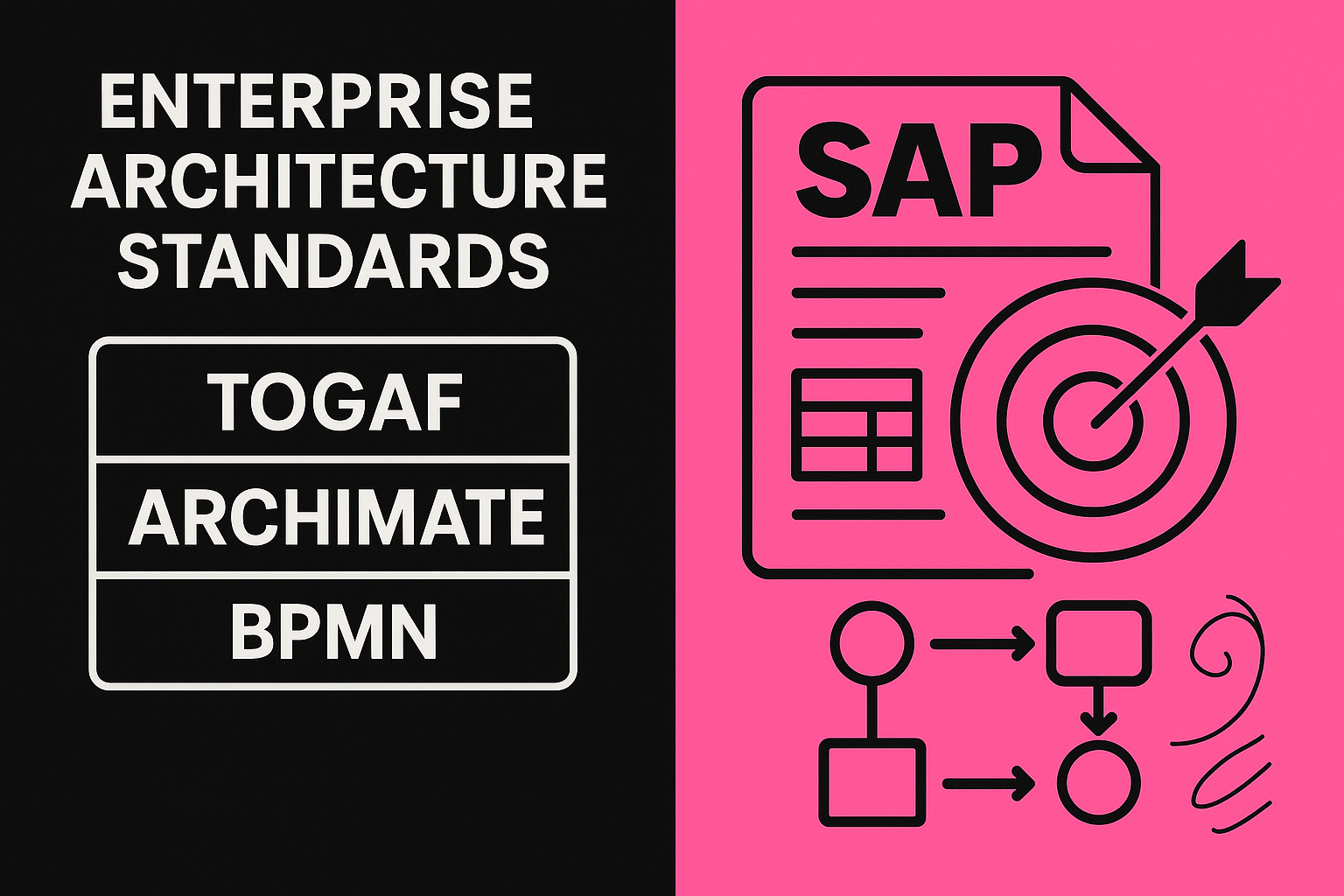Lesson Title:
EA Standards and Models with SAP Alignment

Lesson Description:
Welcome back! In this session, we shift our focus to exploring how SAP’s Enterprise Architecture approach aligns with widely recognized industry standards and models like TOGAF, ArchiMate, and the Zachman Framework. Using real-world examples from Nestlé’s GLOBE initiative, you’ll learn how SAP integrates these standards into its Enterprise Architecture methodology, ensuring clarity, consistency, and practical applicability in SAP-driven transformations.

Lesson Learning Objectives:
-
Understand key Enterprise Architecture standards such as TOGAF, ArchiMate, and the Zachman Framework.
-
Recognize how SAP’s Enterprise Architecture framework aligns with industry standards.
-
Identify the benefits of adhering to standard EA methodologies and modeling techniques.
-
Explore Nestlé’s practical application of industry-standard frameworks within their SAP-driven initiatives.
-
Gain insights into SAP’s EA meta-model and reference architecture content.
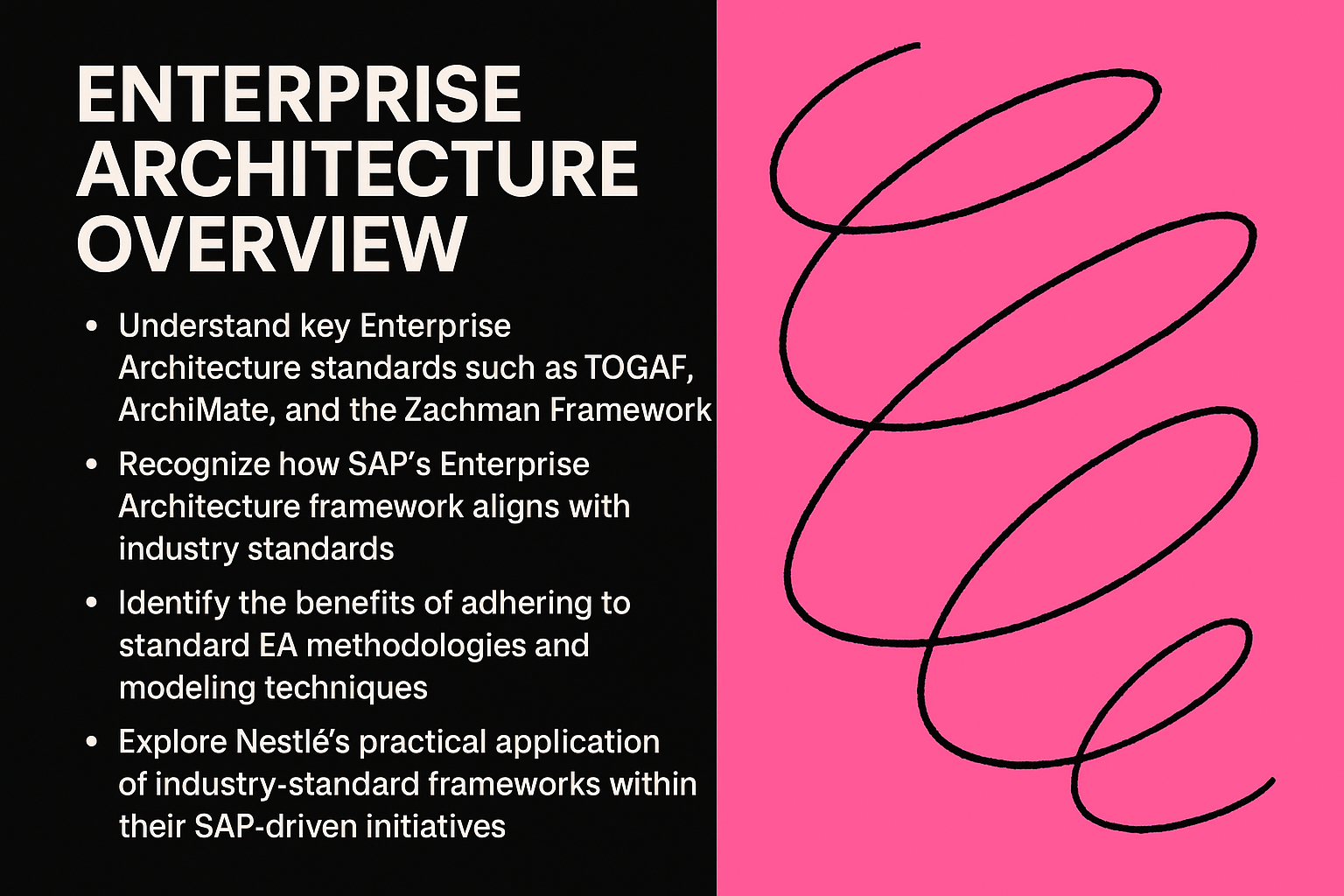
Terminology:
-
TOGAF (The Open Group Architecture Framework): A comprehensive framework for enterprise architecture providing methods (ADM) to develop and govern EA practices.
-
ArchiMate: An open-standard modeling language for visually documenting Enterprise Architectures.
-
Zachman Framework: A schema for classifying architecture artifacts, providing a structured taxonomy for enterprise architecture.
-
BPMN (Business Process Model and Notation): Standardized graphical notation for modeling business processes.
-
GLOBE Program: Nestlé’s global enterprise architecture initiative designed to standardize processes and integrate systems using SAP.
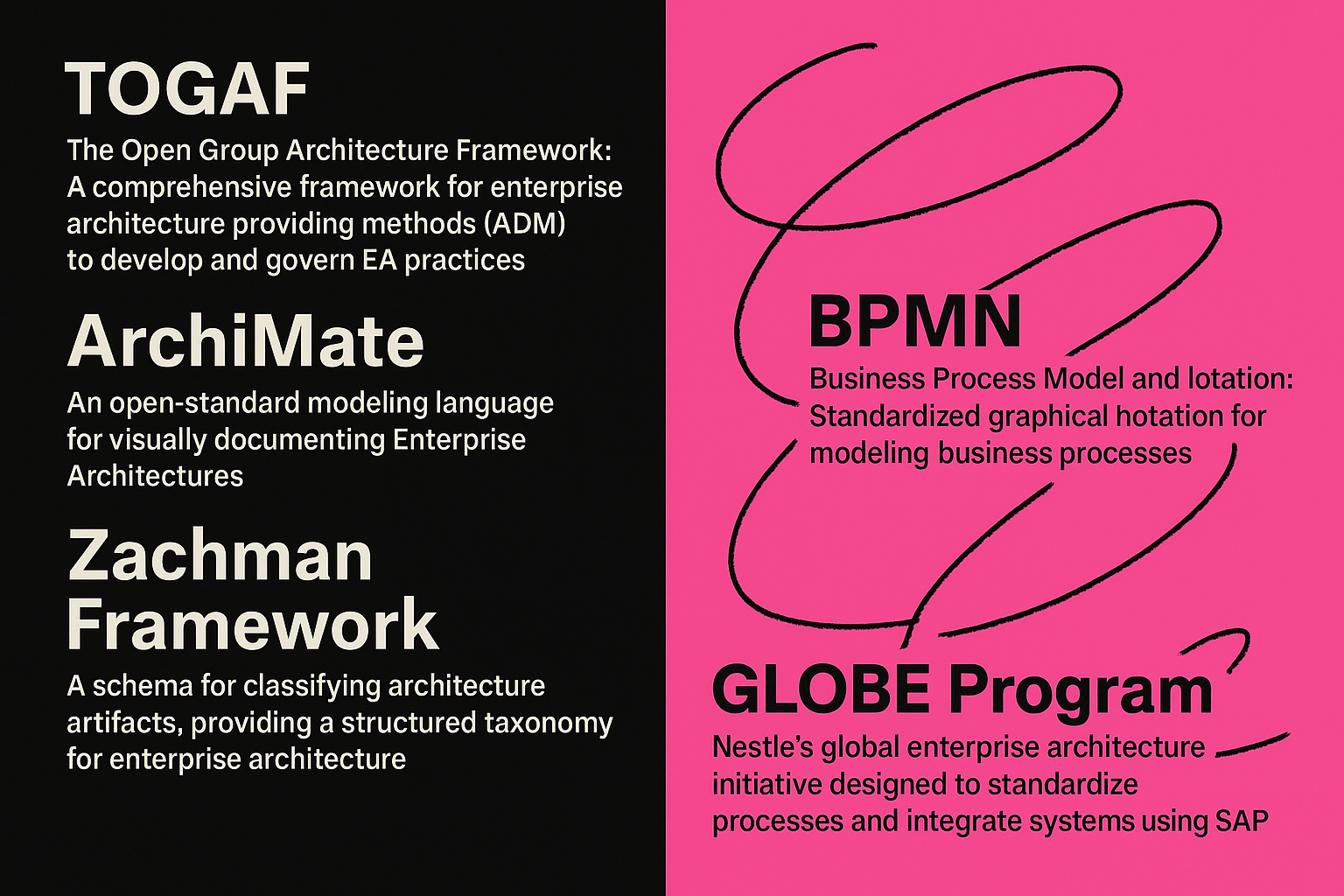
Lesson Key Points:
-
SAP Enterprise Architecture aligns closely with established standards like TOGAF, utilizing similar phases and artifacts.
-
Nestlé’s GLOBE program illustrates a practical application of these standards, including TOGAF methodology and BPMN modeling.
-
SAP’s EA approach incorporates TOGAF’s structure, ArchiMate’s modeling clarity, and leverages best practices like the APQC process framework.
-
SAP provides tailored frameworks, reference architectures, and standard methodologies to support cohesive and structured enterprise architecture efforts.
-
Utilizing standard EA frameworks and models simplifies communication, ensures consistency, and accelerates project planning and execution.
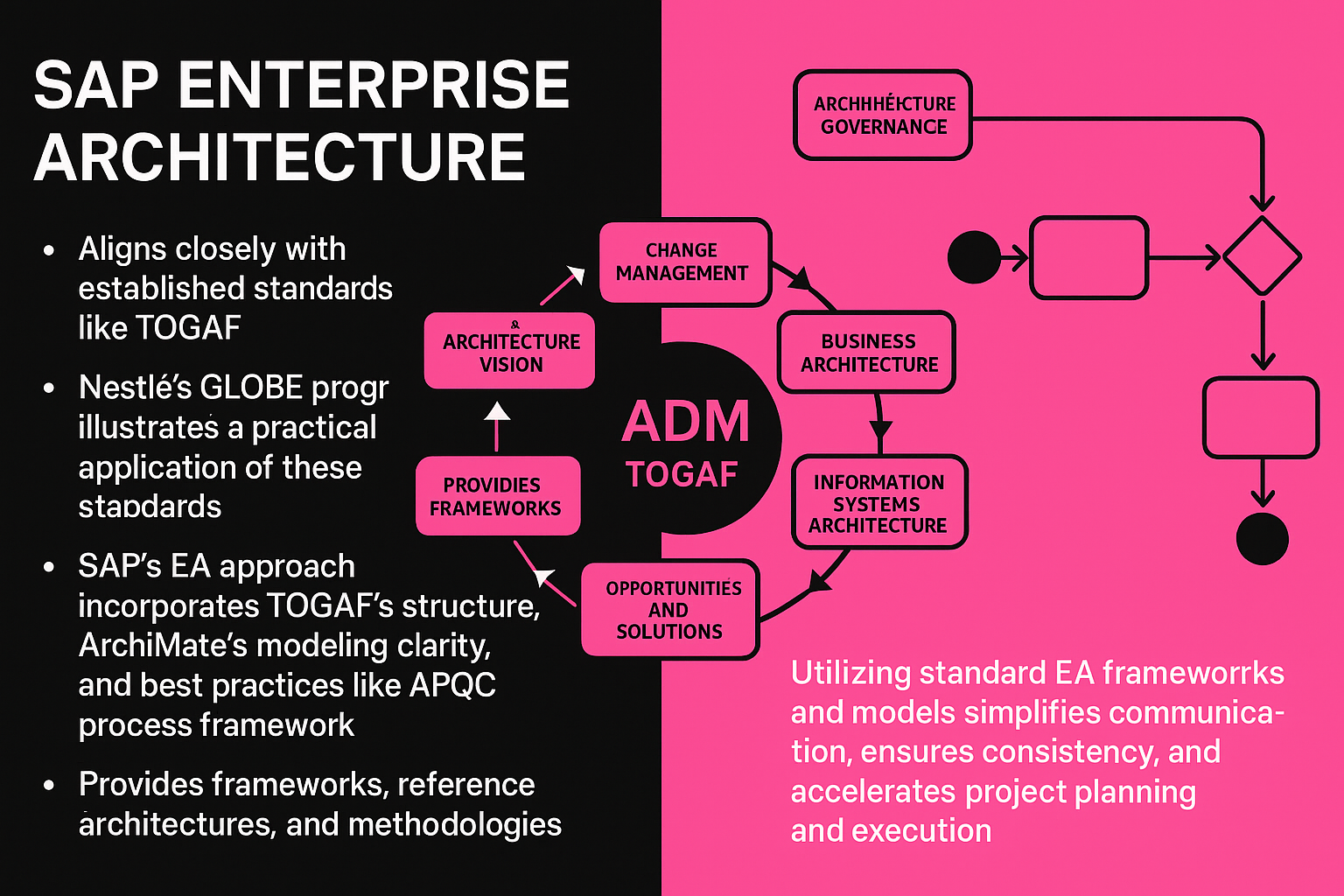
Lesson Summary:
In this lesson, we’ve reviewed how SAP Enterprise Architecture aligns with renowned industry standards such as TOGAF, ArchiMate, and the Zachman Framework. Nestlé’s comprehensive use of these standards within its GLOBE initiative provides a clear, real-world example of their practical benefits. SAP’s approach is built upon industry-standard frameworks, tailoring them specifically for SAP environments. By leveraging SAP’s predefined reference architectures, meta-models, and industry-standard best practices, organizations can significantly enhance the effectiveness, agility, and alignment of their IT and business strategies.
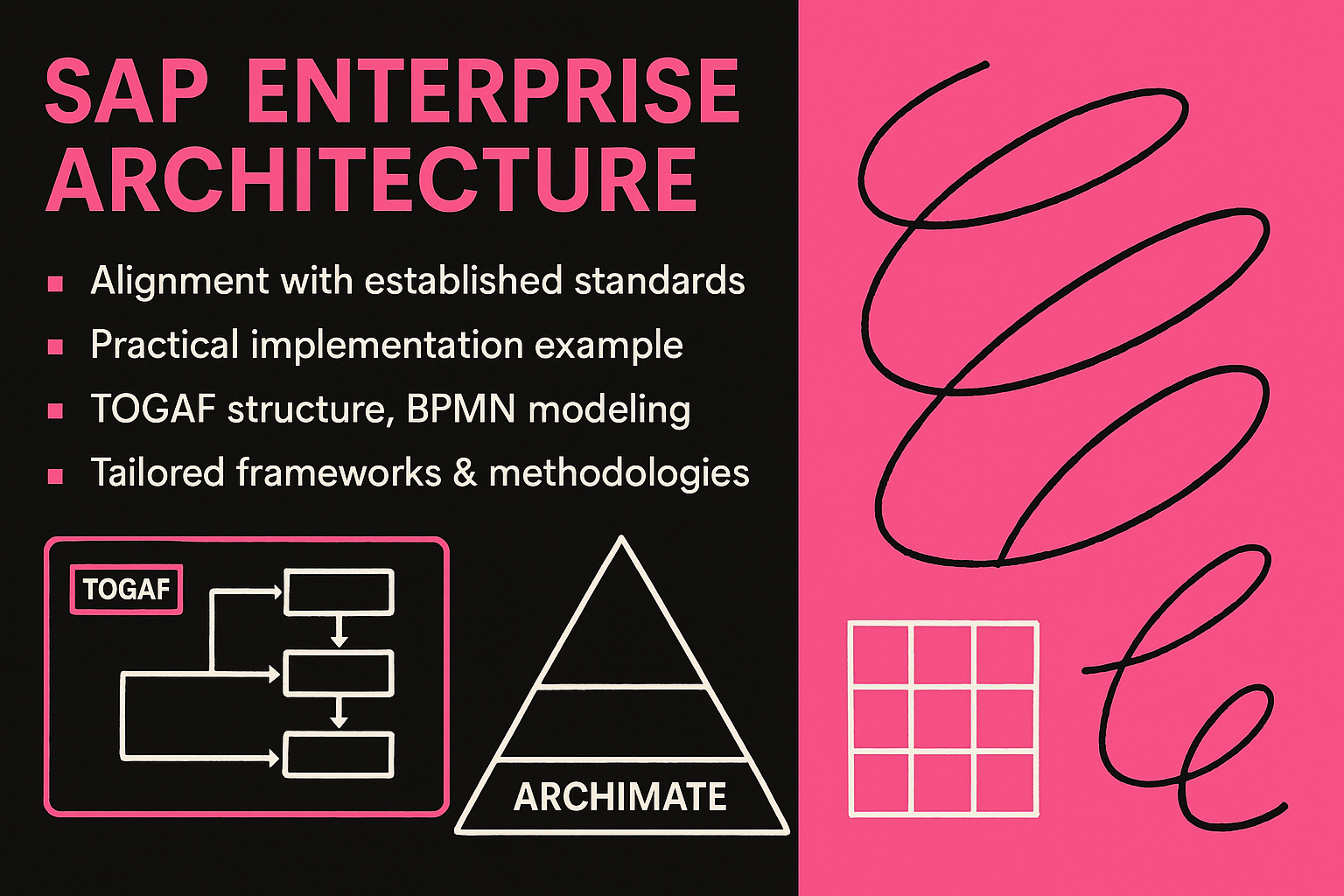
Lesson Takeaways:
-
Enterprise Architecture standards (TOGAF, ArchiMate, BPMN) provide a structured approach that SAP effectively incorporates.
-
Using standard frameworks ensures clear communication and consistency across EA efforts.
-
SAP’s tailored EA methodology leverages industry-standard frameworks, providing practical tools and content specific to SAP environments.
-
Nestlé’s successful implementation of EA standards underscores the tangible benefits of aligning SAP projects with these frameworks.
-
Standardized modeling and architecture frameworks help enterprises mitigate risks, improve alignment, and streamline the execution of IT transformation projects.
